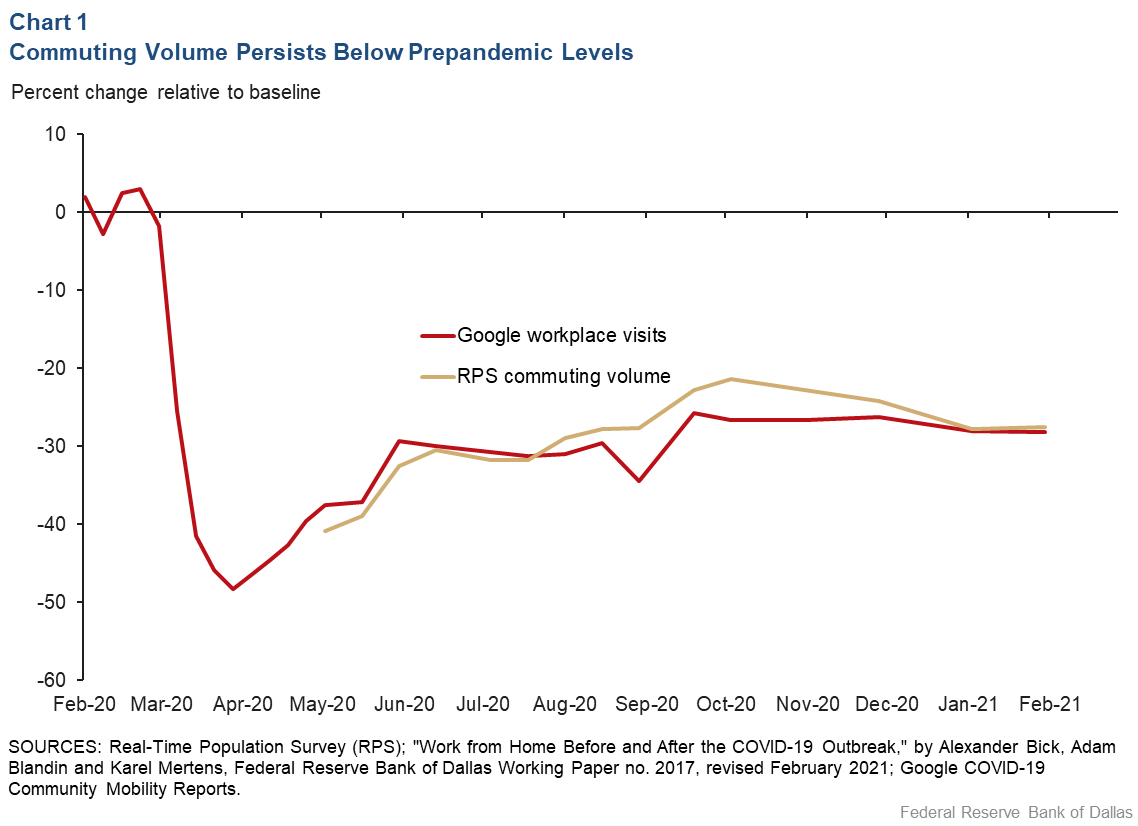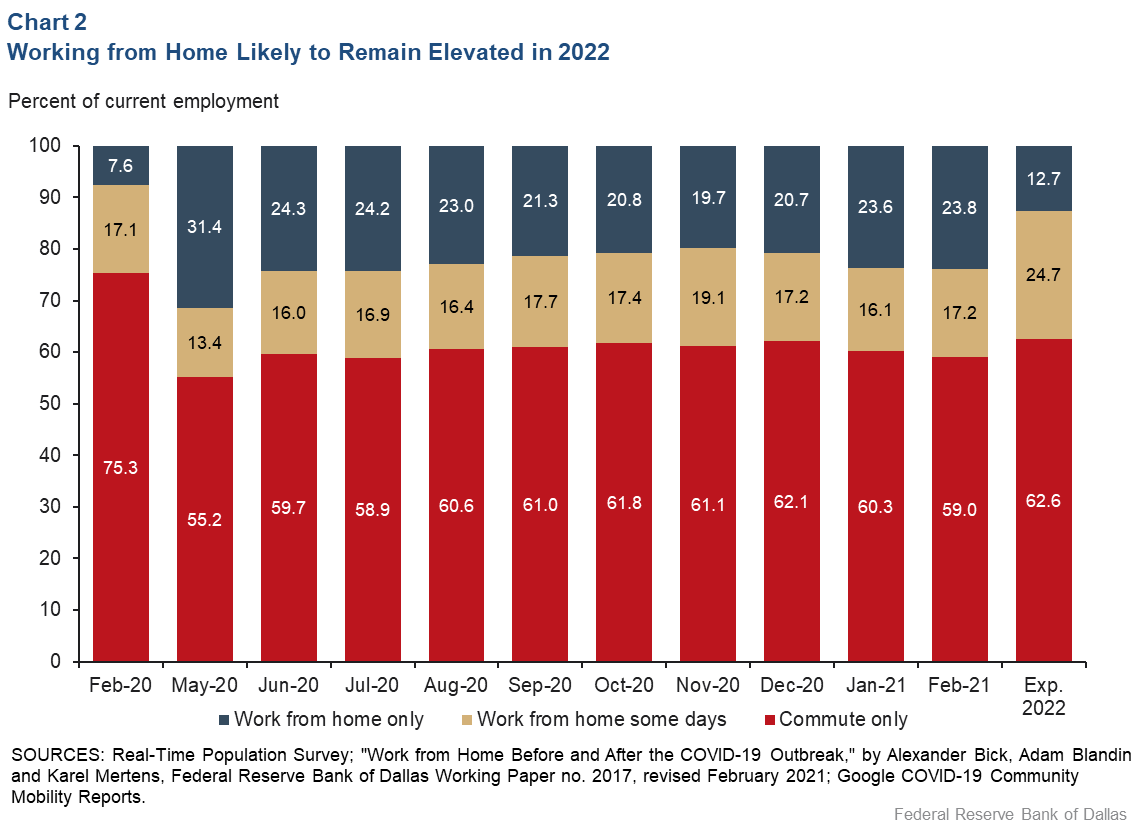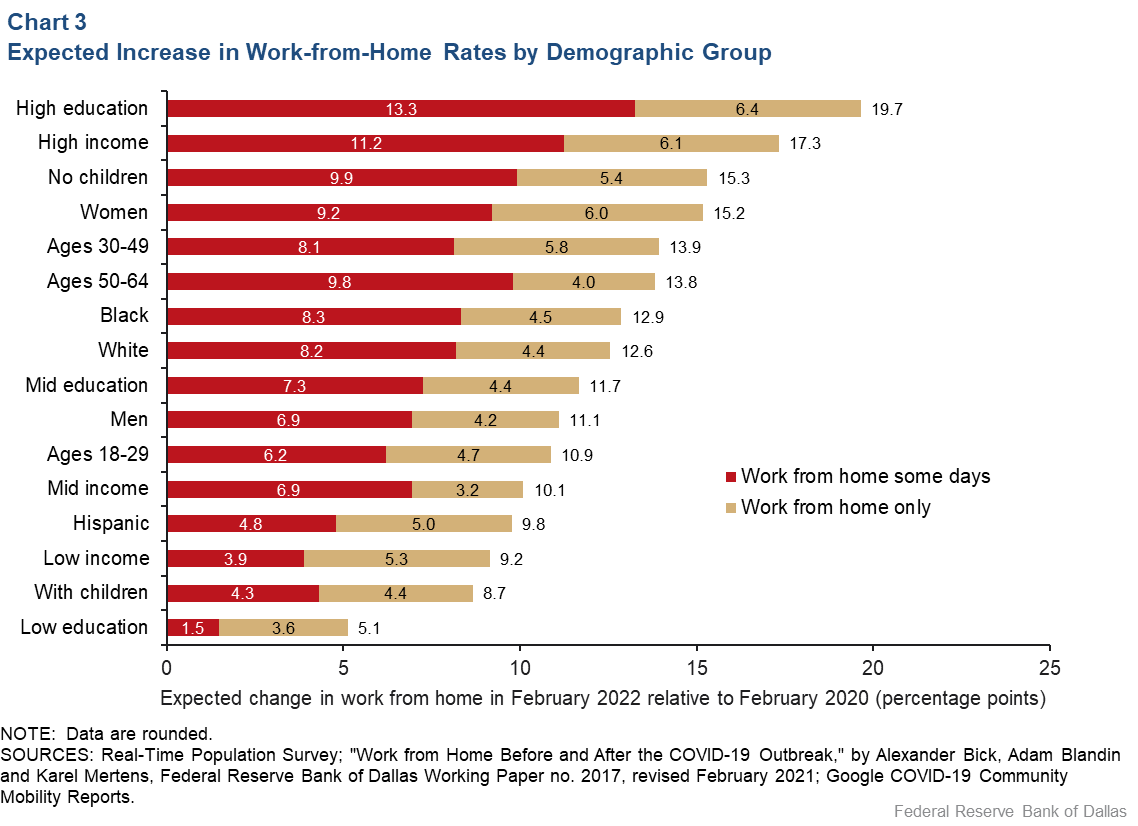
For many, work-from-home arrangements likely to outlast pandemic
Many workers say they expect to work from home after the pandemic ends. Although commuting remained below prepandemic levels in February, it is likely to increase in the near term as labor market conditions improve and home arrangements become more part time.
Since May 2020, we have tracked commuting behavior in the Real Time Population Survey (RPS), a novel online survey of households designed to track the impact of COVID-19 on employment.
Commuting well below normal at beginning of 2021
Total commuting volume, while up substantially from the earlier months of the COVID-19 outbreak, remained almost 30 percent below prepandemic levels in February, RPS and Google data on workplace visits show (Chart 1).

We estimate in our latest Dallas Fed Working Paper that about 30 percent of the commuting shortfall is attributable to employment remaining well below prepandemic levels. Workers continuing to work from home account for the remaining 70 percent.
Almost one in four workers fully at home in February 2021
Chart 2 plots the share of the workforce (ages 18 to 64) that worked from home entirely, worked from home some workdays or commuted every workday.
In February 2021, 59.0 percent of workers commuted daily—up from 55.2 percent in May 2020 but still well below the prepandemic level of 75.3 percent—and 23.8 percent worked entirely from home—down from 31.4 percent in May but well above the 7.6 percent level in February 2020.

More work from home expected, though mostly part time
During the three-month period through February 2021, we asked all RPS respondents with a job (6,700 individuals) about their expectations for working from home in 2022. The last bar in Chart 2 shows that 12.7 percent expect to work from home every workday, considerably fewer than the 23.8 percent that did so in February 2021.
Almost a quarter (24.7 percent) of workers anticipate working from home on a part-time basis in the future, compared with 17.2 percent who did so in February 2021. Overall, the fraction of daily commuters is expected to increase slightly relative to recent levels at 62.6 percent in 2022 but remain well below the prepandemic level of 75.3 percent in February 2020.
Nonetheless, the expected shift toward more part-time versus full-time work from home—and partial return to the formal workplace—would contribute to a further recovery in commuting.
Benefits of work from home unlikely to be shared equally
The expectations for more part-time work from home in the future, along with other evidence discussed in our working paper, suggest that the pandemic potentially unlocked important new welfare gains in the form of lower commuting costs, higher productivity and greater geographical mobility. In such a situation, these gains are unlikely to be shared equally.
Highly educated workers, in particular, are likely to experience the largest change in commuting behavior from February 2020 to February 2022 (Chart 3).

If realized, the 19.7 percentage-point increase by 2022 would mean that almost half of all workers with a bachelor’s degree or more would work at least partially away from the office compared with February 2020.
Many more workers with higher education and income, workers without children at home, and female workers will likely experience a persistent change in commuting behavior. Far fewer men, Hispanic workers, workers with children, and those with lower education and income are expected to work from home in 2022.






